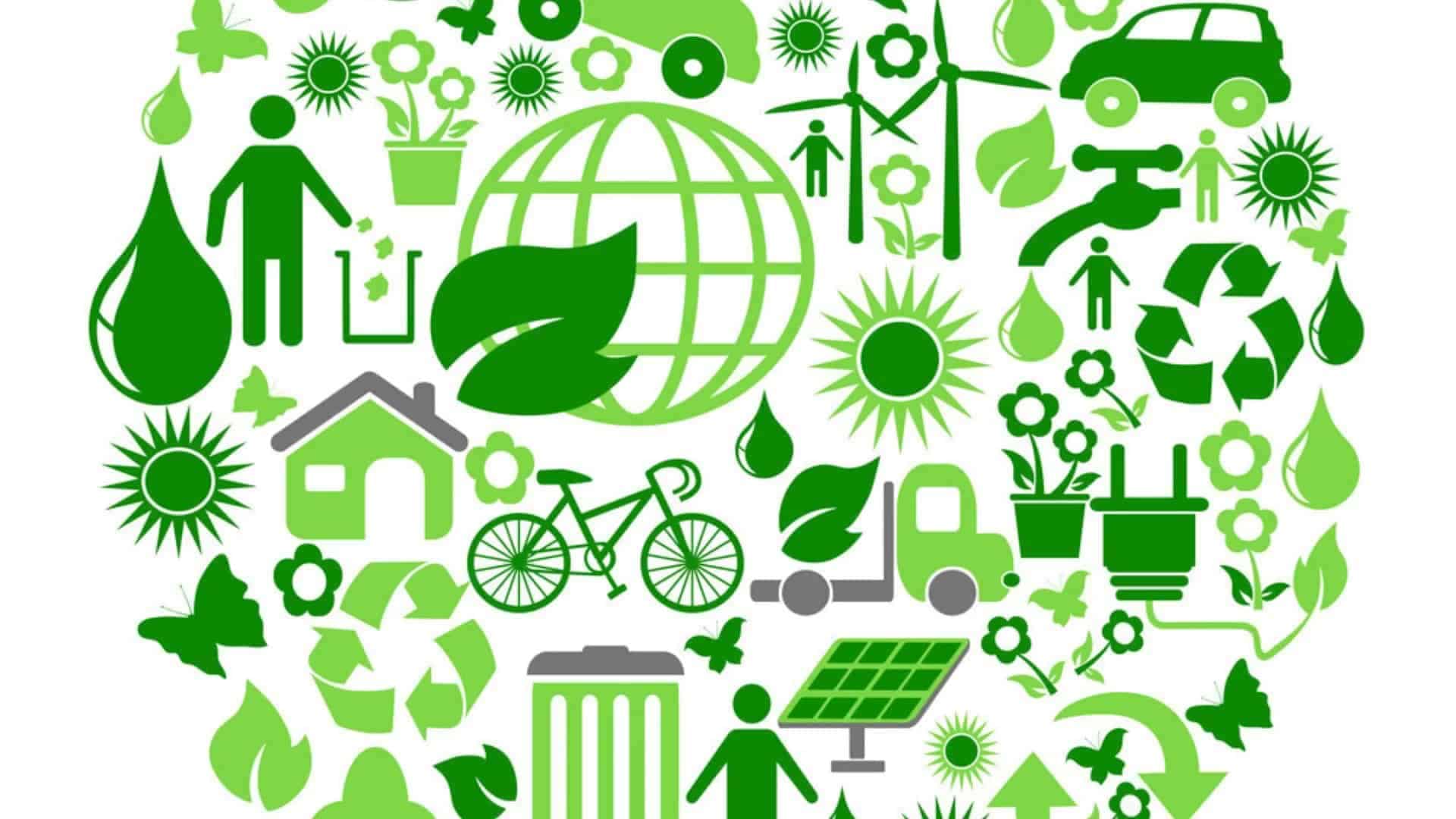Green labeling has gained popularity as consumers become increasingly concerned about the impact of purchases on the environment.
Essentially, green labeling refers to the practice of companies using environmentally friendly labels on their products. This indicates that they are eco-friendly or sustainable.
As consumers become more conscious of their impact on the planet, they are seeking products that align with their values. Green labeling is one way that companies can signal their commitment to sustainability.
In this blogpost, we will explore the pros and cons of green labeling, and different types of labels, and how to regulate them.
What is Green Labeling?
Green labeling is a relatively new concept that has gained a lot of popularity in recent years. It refers to the practice of labeling products that have been manufactured in an environmentally friendly manner.
This includes products that have been made using sustainable materials and products that have been produced using renewable energy sources.
The main purpose of green labeling is to help consumers make good choices about the products they purchase. By providing clear and concise information about the environmental impact of a product, consumers can make educated decisions about which products to buy.
Green labeling also helps to promote environmentally friendly practices among manufacturers, as it provides an incentive for companies to reduce their environmental footprint.
There are several different types of green labels that are used to indicate the environmental impact of a product. These include labels that indicate whether a product is made from recycled materials, labels that indicate whether a product is biodegradable, and labels that indicate whether a product is energy efficient.
Green labeling is an important tool for promoting sustainability and reducing the environmental impact of consumer products. By providing clear and concise information about the environmental impact of a product, green labeling helps to educate consumers about the importance of making environmentally responsible choices.
As more and more consumers become aware of the impact of their purchasing decisions on the environment, the demand for environmentally friendly products is likely to increase, making green labeling an essential tool for promoting sustainability in the marketplace.

Benefits Of Green Labeling
There are several benefits of green labeling that make it an essential strategy for businesses to adopt:
Promote sustainable practices: Highlighting environmentally friendly products encourages the consumers to make more conscious choices When consumers know that a product is sustainable, they are more likely to choose it over other options. This creates a demand for sustainable products, which encourages businesses to adopt more sustainable practices.
Reduce the environmental impact of products: When businesses adopt more sustainable practices, they reduce their carbon footprint and waste output. This has a positive impact on the environment, as it helps to reduce pollution and slow down climate change. By promoting sustainable products through green labeling, businesses can encourage consumers to make more environmentally friendly choices and reduce their own impact on the environment.
Help businesses to build brand loyalty: Consumers today are more conscious about the impact of their choices on the environment. When businesses demonstrate their commitment to sustainability through green labeling, it can help to build trust and loyalty among customers.
Therefore, green labeling is a powerful tool to promote sustainability, reduce their environmental impact, and build brand loyalty. As consumers become increasingly conscious about the impact of their choices on the environment, businesses are likely to gain a competitive advantage.
Also read How Environmentally Conscious Recycling Can Change Your Life?
Types Of Green Labels
There are different types of green labels, each with its own set of criteria and requirements. In this exciting discussion, we will explore the different types of green labels that are available in the market.
- There are eco-labels that are awarded to products that meet specific environmental criteria. These labels are awarded by independent third-party organizations that assess products based on their life cycle, from raw material extraction to disposal.
- There are carbon footprint labels that indicate the amount of carbon dioxide emitted during the production of a product. These labels are becoming increasingly popular as consumers become more aware of the impact of carbon emissions on the environment.
- There are fair trade labels that ensure that products are produced in a socially responsible manner. These labels indicate that the products have been produced under fair labor conditions and that the producers have received fair compensation for their work.
- There are energy star labels that are awarded to products that meet specific energy-efficient criteria. These labels are commonly found on appliances and electronics and indicate that the product uses less energy than standard models.
These labels are valuable tools for consumers who want to make informed decisions about the products they purchase. By choosing products with green labels, consumers can help protect the environment and promote sustainability.
Green Labeling Certifications
Organizations that certify products based on their environmental impact regulated eco-labeling standards. These organizations ensure that the products meet certain environmental standards that are set by industry experts. Such certifications not only help reduce the carbon footprint but also ensure that the products are safe for the environment and human health.
Here are some eco-labeling standards and certifications:
ISO 14001 is a certification program for environmental management systems.
Green Seal is a certification program for sustainable products.
USDA Organic is a certification program for organic food.
Energy Star is a certification program for energy-efficient products.
WaterSense is a certification program for water-efficient products
How To Get Green Certified?
Green certification is a process that involves evaluating and recognizing businesses or individuals who have taken steps to reduce their environmental impact. It not only helps the environment but also helps your business stand out in today’s competitive market.
Here are the options to get green certified in the US:
Green Business Bureau offers a certification program for businesses. The Green Business Bureau is an organization that helps businesses go green and become more eco-friendly in their operations. They offer a certification program that recognizes businesses for their efforts and provides guidance on how to improve further.
US Green Building Council offers a certification program for buildings. Their mission is to transform the way of designing, constructing, and operating buildings. The goal of creating healthier and more sustainable living and working environments. The USGBC is responsible for the development of the Leadership in Energy and Environmental Design (LEED) certification program.
Green Seal offers a certification program for sustainable products. The Green Seal certification program is an exceptional initiative aimed at promoting eco-friendly products and services. It’s a third-party certification program that ensures that the products and services meet the highest standards of environmental sustainability.
Green-e Energy offers a certification program for renewable energy. The Green-e certification program is a game-changer in the renewable energy sector. This program is designed to promote clean and sustainable energy practices by certifying renewable energy products and services.
Challenges Of Green Labeling
Green labeling has become a popular trend in recent years as more and more consumers are prioritizing sustainable and eco-friendly products.
However, green labeling comes with its own set of challenges that companies must navigate in order to accurately represent their products and avoid accusations of “greenwashing”.
One major challenge of green labeling is ensuring that the labeling accurately reflects the product’s sustainability practices. This can be difficult as there is no universal definition of what constitutes a “green” product or practice.
Another challenge is ensuring that the green labeling is transparent and easy for consumers to understand. Many companies use vague terms like “eco-friendly” or “sustainable” without providing specific information on product’s sustainability practices.
Lastly, there is the issue of third-party certifications and the credibility of the agencies providing them. Third-party certifications can provide valuable information about a product’s sustainability practices. This ensures there is a lack of standardization in the certification process.
Future Of Sustainable Labeling
The future of sustainable labeling is incredibly exciting, and it’s a trend gaining momentum in the years to come. With consumers becoming conscious of their environmental impact, brands are adopting sustainable practices throughout their supply chains. Sustainable labeling is a key component of this, as it allows consumers to make informed decisions about the products they buy.
One exciting development in sustainable labeling is the rise of digital labeling. This involves using digital technologies provide consumers with detailed information about the product’s sustainability credentials. This not only provides consumers with more information but also reduces the need for physical labeling, which is often made from unsustainable materials.
The future of sustainable labeling is bright, and we can expect to see continued innovation and development in this area. As consumers become more environmentally conscious, brands will need to keep up with their expectations, and sustainable labeling will play a crucial role in this. By providing consumers with more information and transparency, sustainable labeling can help drive positive change and ensure a more sustainable future for all.
Conclusion
Green labeling is an effective way for consumers to make informed decisions about the products they purchase. The benefits of green labeling include reduced environmental impact, increased consumer confidence, and improved health and safety. There are several types of green labels, including energy star ratings, organic certifications, and eco-labels. Green packaging certification programs are also available to ensure that packaging materials are environmentally friendly.
Green labeling and certification programs are an important step towards a more sustainable future. By making conscious decisions about the products we purchase, we can all do our part to protect the environment and promote a healthier planet for future generations.
It is an effective way for consumers to make informed decisions and support sustainable companies. As more and more consumers prioritize environmental considerations in their purchasing decisions, green labeling will become increasingly important.
EcoWiser is your go-to source for sustainable, eco-friendly alternatives to everyday products. Our comprehensive selection of sustainable alternatives will reduce your environmental footprintand promote a healthy lifestyle. Along with our product selection, we also provide helpful blogs about the latest sustainable living trends, tips for reducing your carbon footprint and advice on how to live a greener lifestyle. With EcoWiser, you can find the perfect eco-friendly solution for your everyday needs.









